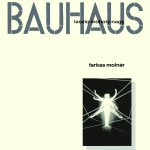
The Bauhaus, 1919–1933
In the wake of the First World War, conceptions of art, mechanization, and technology were becoming much-discussed subjects by aestheticians. German architect Walter Gropius attempted to synthesize these subjects in 1919 when he opened the Bauhaus, a studio in Weimar, Germany that would eventually become eponymous for the ideals of the school. Now, a hundred years after the Bauhaus was founded, people are returning their gaze to the avant-garde artistic school. Lars Müller Publishers has collaborated with Bauhaus-Archiv and Museum für Gestaltung, Berlin to publish a facsimile edition of bauhaus journal, a publication that ran from 1926-1931. The recirculation of bauhaus journal addresses the methods and focal points of Bauhaus teachings, and it touches on how the Bauhaus became the movement that it was in the 1920s and 1930s.
The Proclamation of the Bauhaus, made in 1919, stated that the Bauhaus was a utopian craft guild that would combine architecture, culture, and painting into one creative expression. By focusing on creative expression, artists aimed to reimagine the material world as a reflection of the abstract arts. By 1923, the Bauhaus changed their philosophy on design—instead of focusing solely on the material as a reflection of the abstract, artists began to make “Art for Industry,” concentrating on how technology can change the way that material is created. Crafts like cabinet-making, weaving, metal-working, and typography became focal points for Bauhaus innovation throughout the 1920s.

Textile sample, ca. 1945. Cellophane and jute, 91 x 101.5 cms.
The Metropolitan Museum of Art, Gift of Anni Albers, 1970. c. 1998 by the Metropolitan Museum of Art. In Selected Writings on Design by Anni Albers (Wesleyan University Press, 2000)
For Anni Albers, a former student at the Bauhaus, the Bauhaus style taught artists to be “unburdened by any considerations of practical application.” As Albers describes in Selected Writings on Design (Wesleyan University Press, 2000), “this uninhibited play with materials resulted in amazing objects, striking in their newness of conception in regard to use of color and compositional elements—objects of often quite barbaric beauty.”

Design for wallhanging, 1926. Gouache on paper, 31.8 x 20.6 cms. The Museum of Modern Art, New York. Gift of the designer. Photograph c. 2000 The Museum of Modern Art. In Selected Writings on Design by Anni Albers (Wesleyan University Press, 2000)
The Bauhaus continued until 1933, when many important figures of the movement and school emigrated to the United States before the outset of World War II, including Albers herself. Bauhaus figures would go on to influence important movements in arts and architecture following the Second World War.

Design for tablecloth, Bauhaus, Germany, 1930. Watercolor and gouache on square-ruled paper, 26 x 24.1 cms. The Museum of Modern Art, New York. Gift of the designer. Photograph c. 2000 The Museum of Modern Art. In Selected Writings on Design by Anni Albers (Wesleyan University Press, 2000)
The Theater of the Bauhaus
Bauhaus theater was also a form that attempted a synthesis of art and modern technology, trying to achieve “the aim of finding a new and powerful working correlation of artistic creation to culminate finally in a new cultural equilibrium of the visual environment.” (The Theater of the Bauhaus, Oskar Schlemmer, Laszlo Moholy-Nagy, Farkas Molnár, Wesleyan University Press, 1961) What that meant was experimenting with all visual aspects of theater, from the way an actor moved to how actors interacted with the stage. Theater was considered to be an artistic material shaped by the artist in order to convey a specific message or emotion, and conceptions of theatrical material was divided into form and color. This form and color took motion on stage, and the actor became the bearer of material to the audience instead of being independent of the stage. Thus, Bauhaus directors experimented with “de-humanizing” the actor, as seen in the piece “The Circus,” where the actors face and body were covered completely by costumes and masks.

Alexander Schawinsky, “Scene from the Circus. First performance 1924 at the Bauhaus.” From The Theater of the Bauhaus by Schlemmer, Moholy-Nagy, and Molnár (Wesleyan University Press, 1961).
These conceptions of “theatrical forms” would also become influential in avant-garde theater in the later parts of the century, and it marked a departure from more traditional theater that focused on the actor as a human form instead of the messenger of form and color. Now, a century since the inception of the Bauhaus, one can still see Bauhaus influence on modern day theater, from imposing, architectural set design to more abstract pieces that focus on substance in form.
For additional reading on innovative theater, check out Wesleyan University Press’ Open Book collection online.
Sources:
The Bauhaus, 1919-1933, The Metropolitan Museum of Art Online
Selected Writings on Design, by Anni Albers
The Theater of the Bauhaus, Oskar Schlemmer, Laszlo Moholy-Nagy, and Farkas Molnár
bauhaus journal 1926-1931, facsimile edition, ed. Lars Müller









